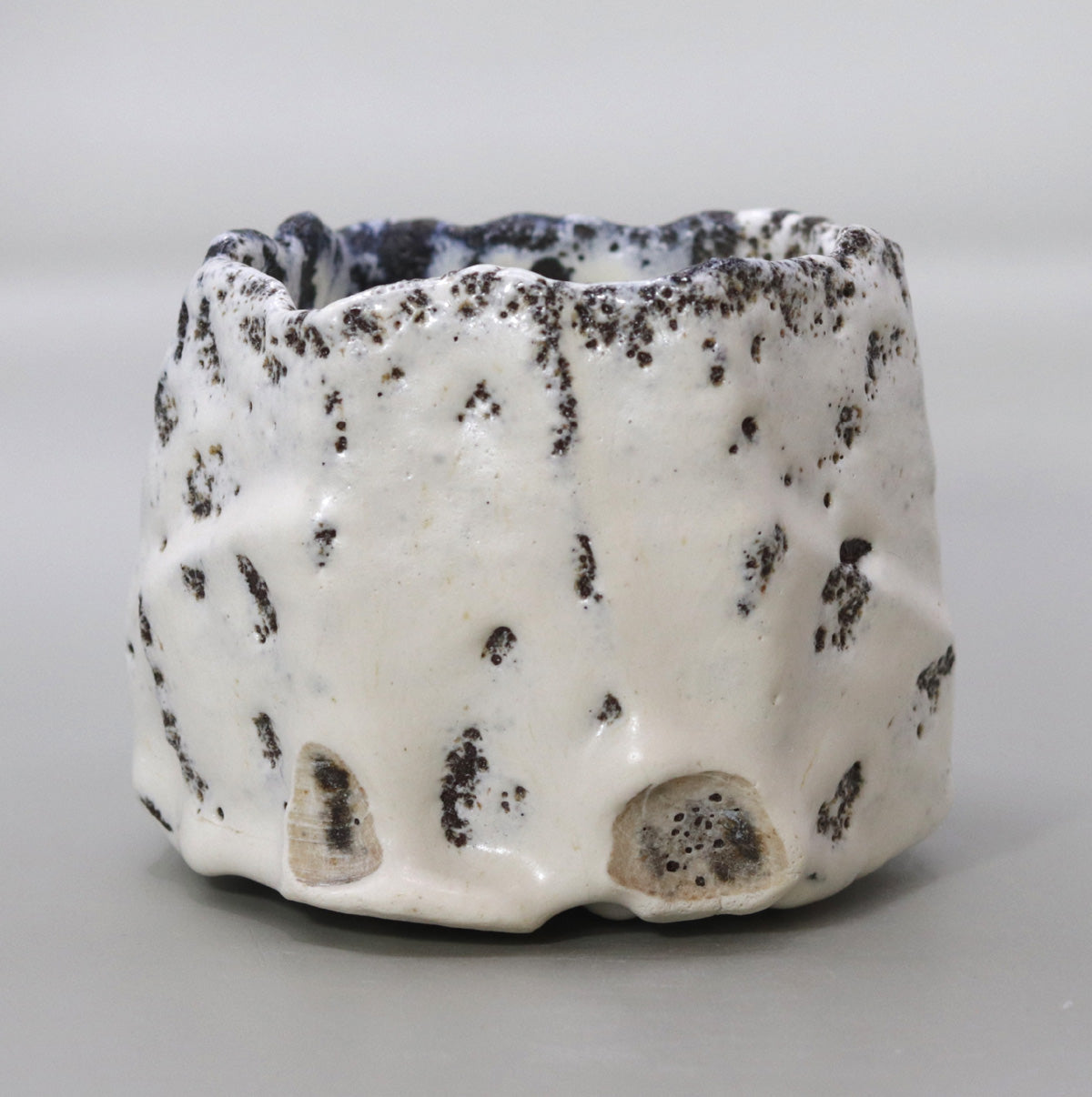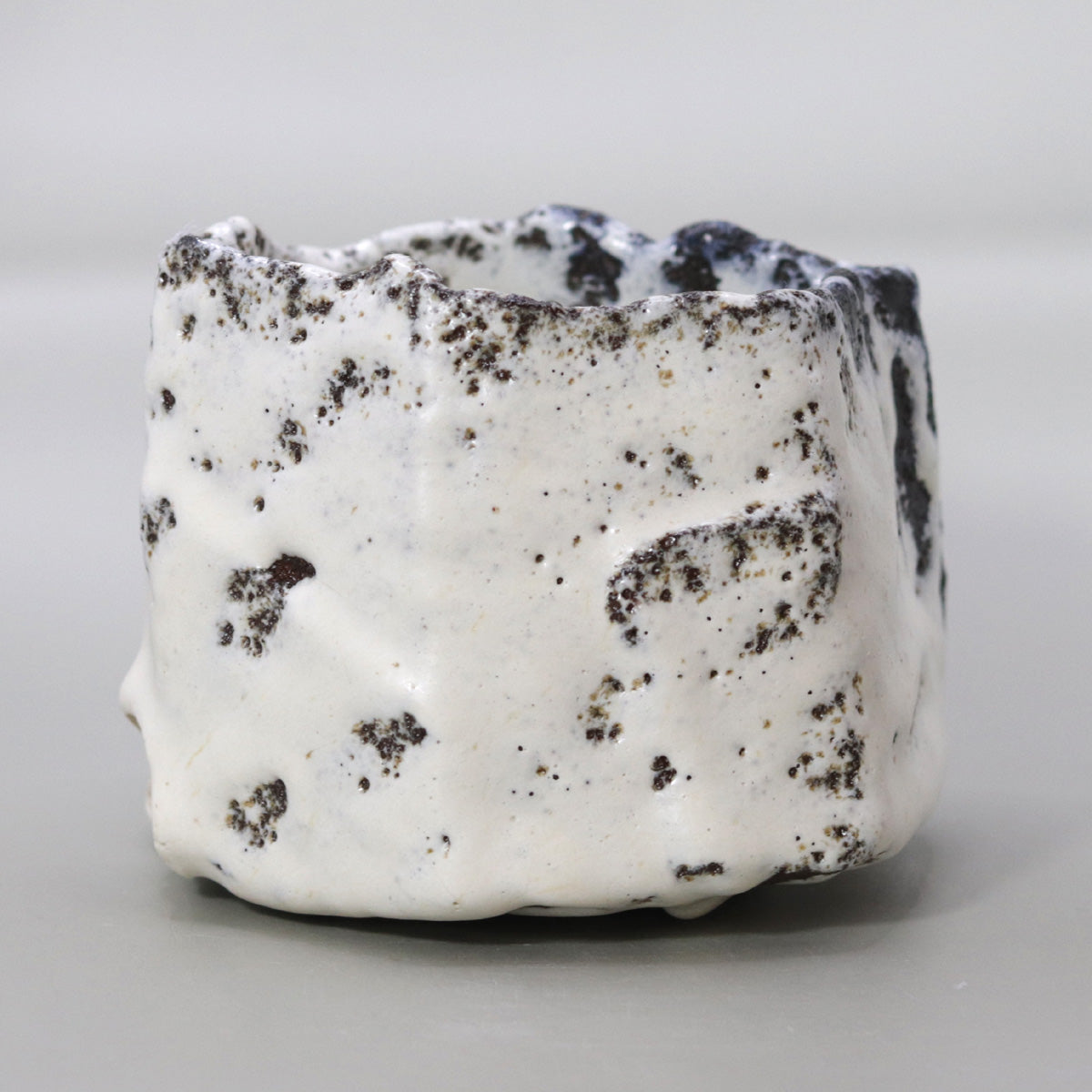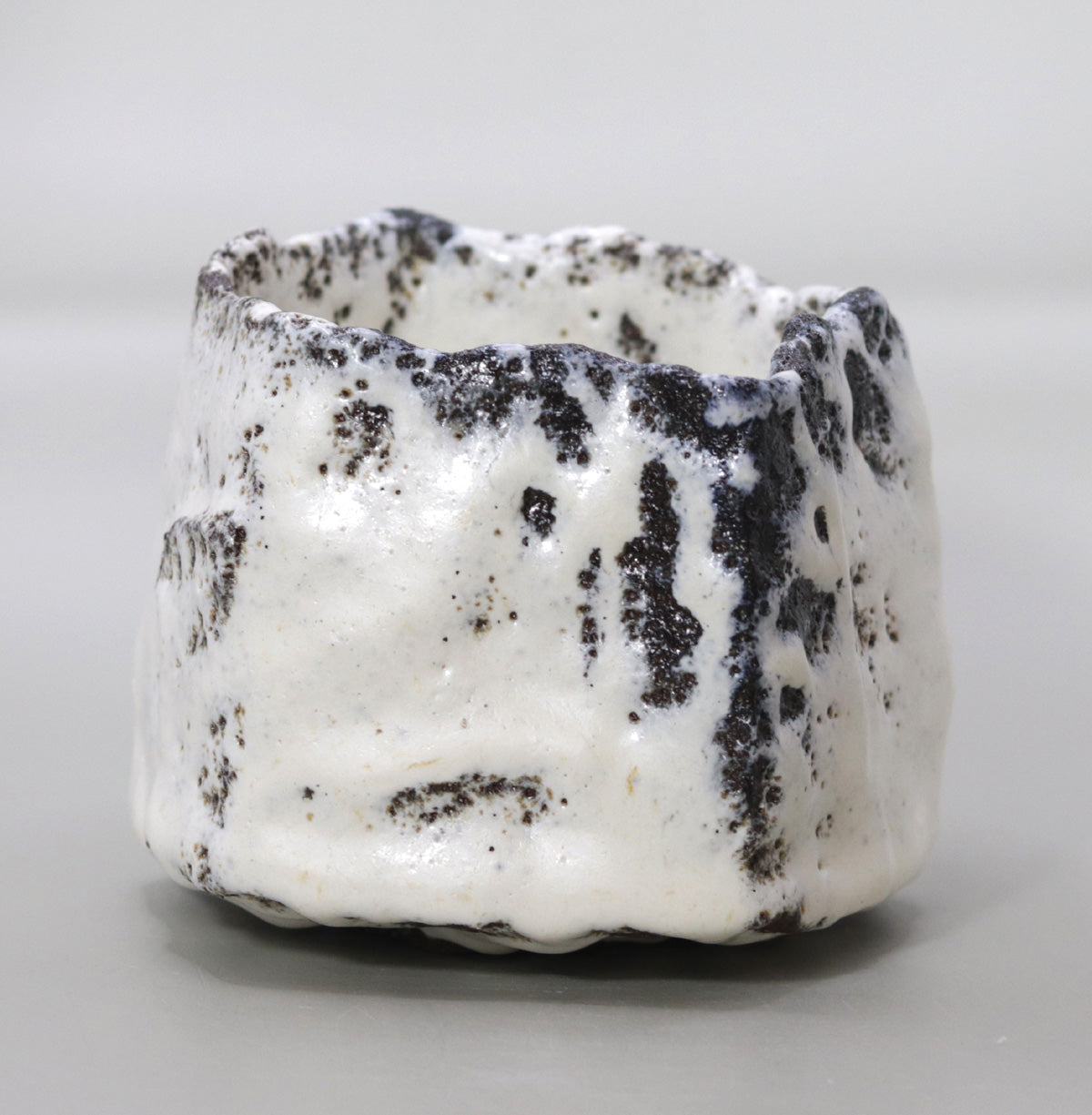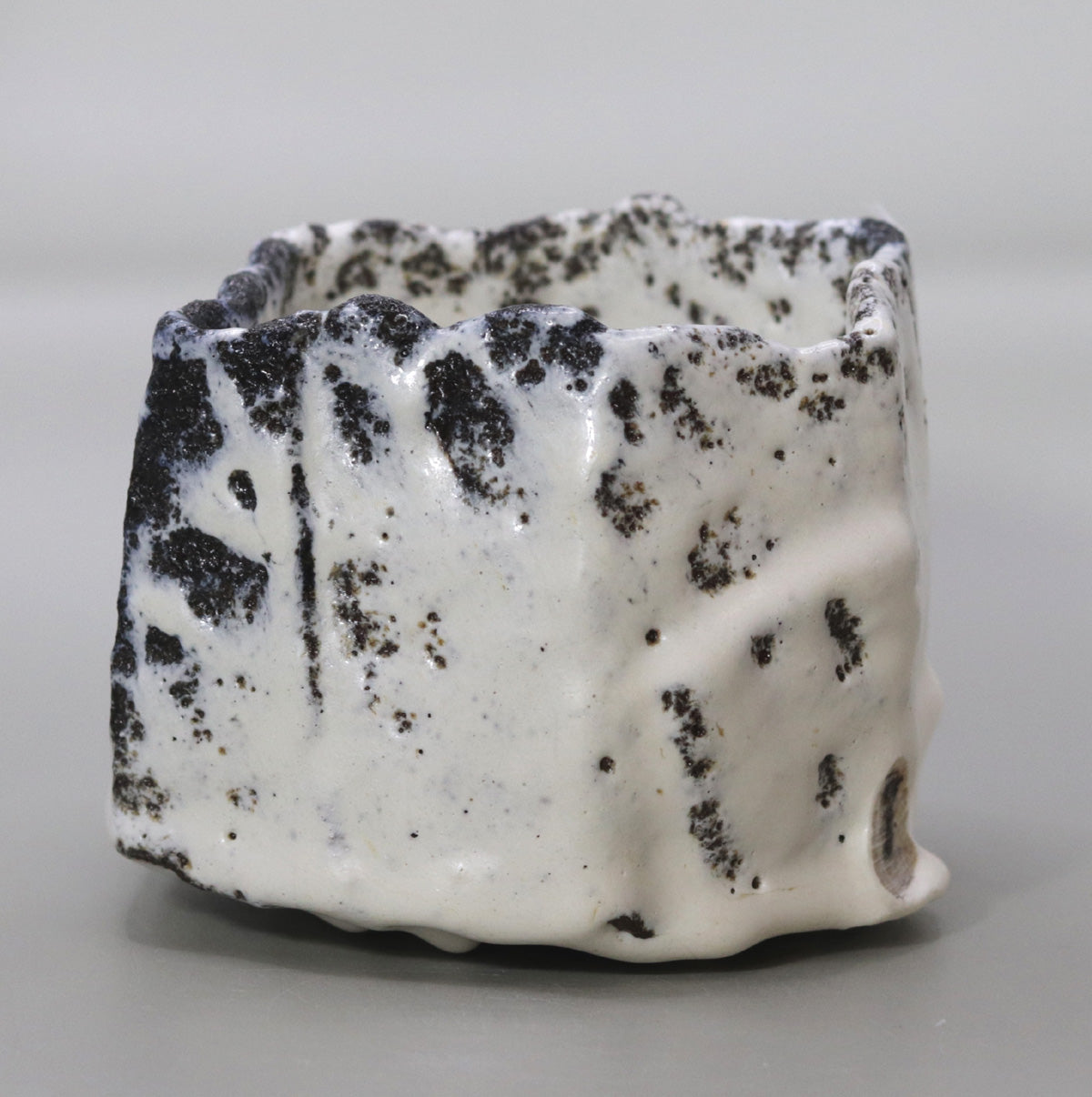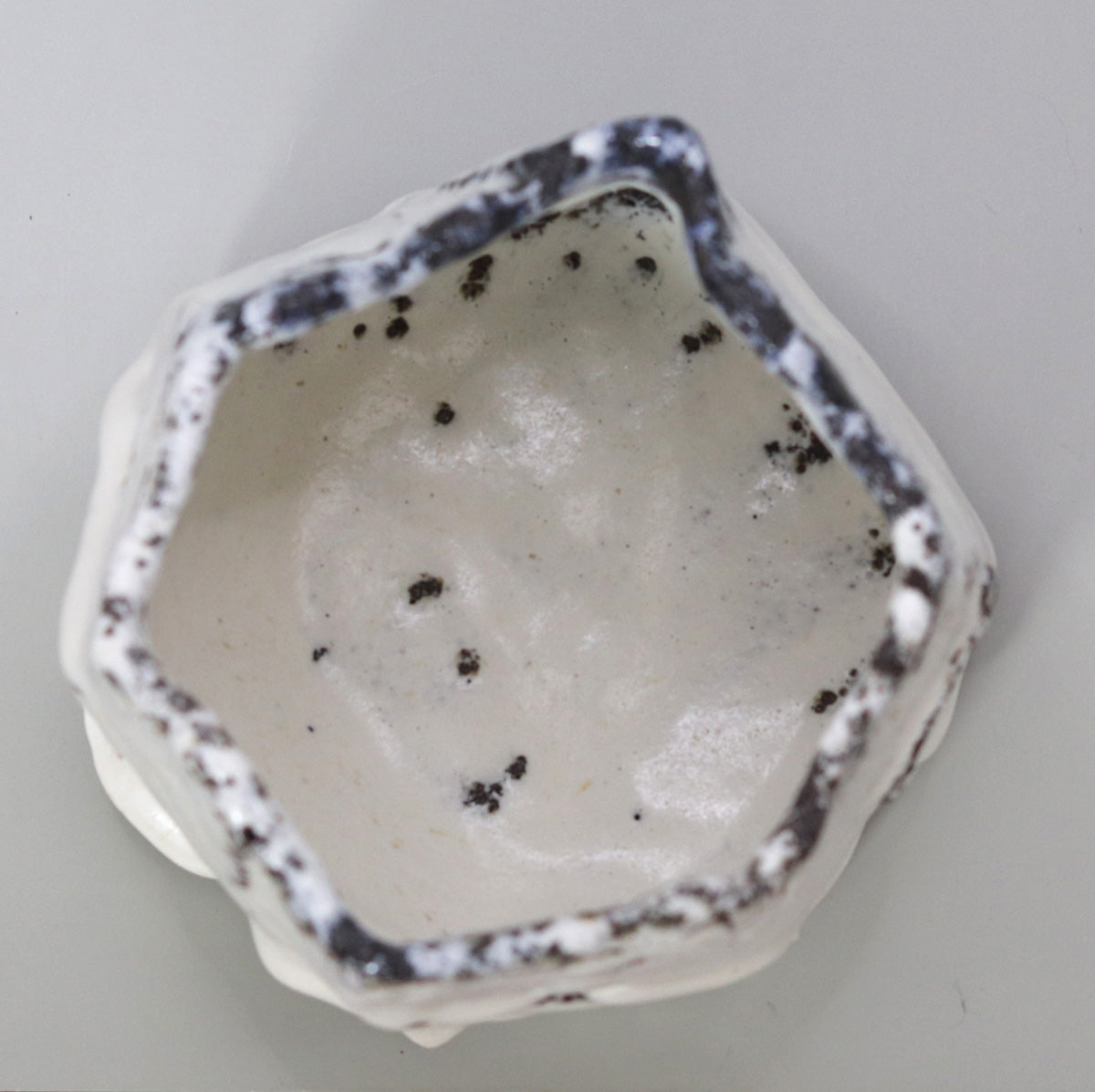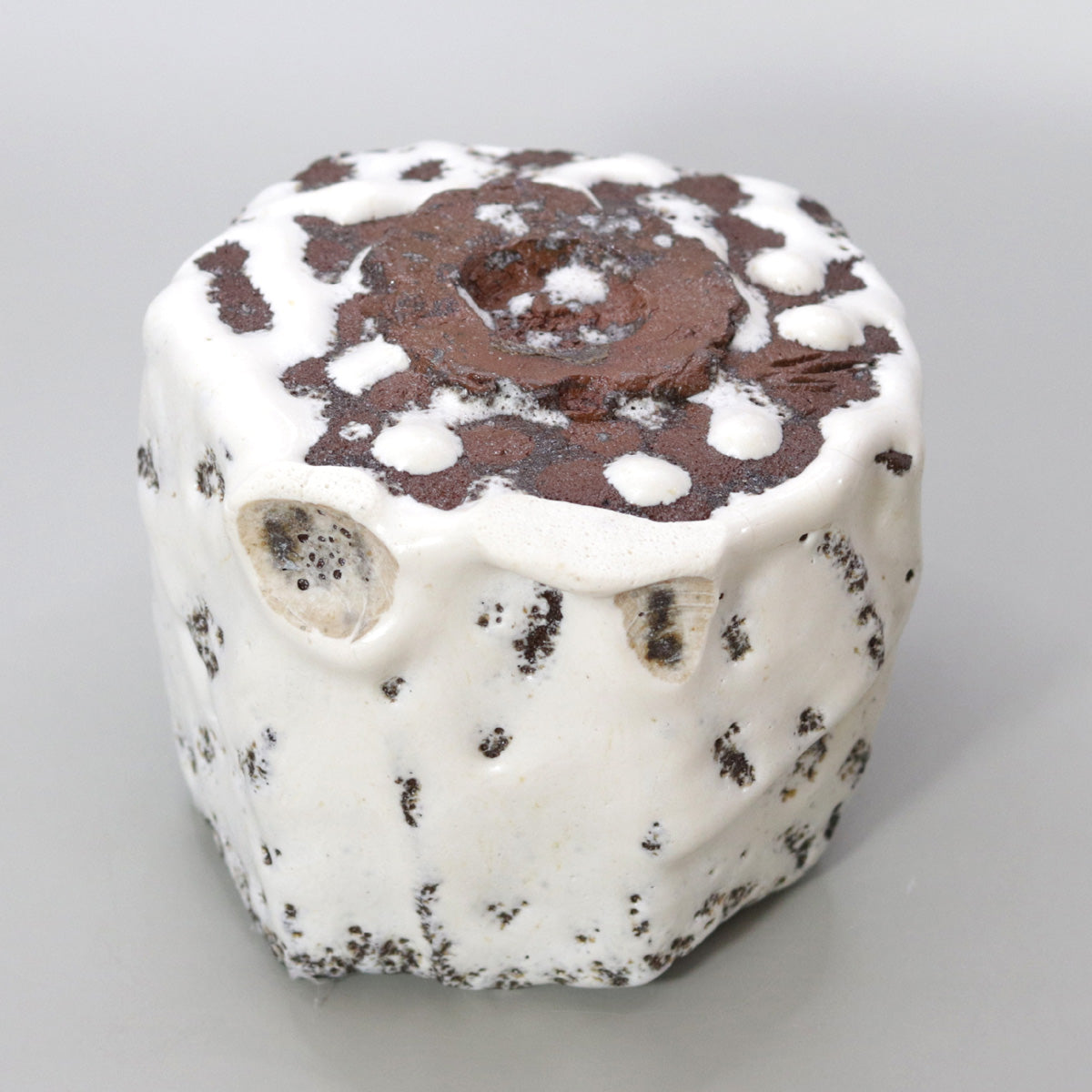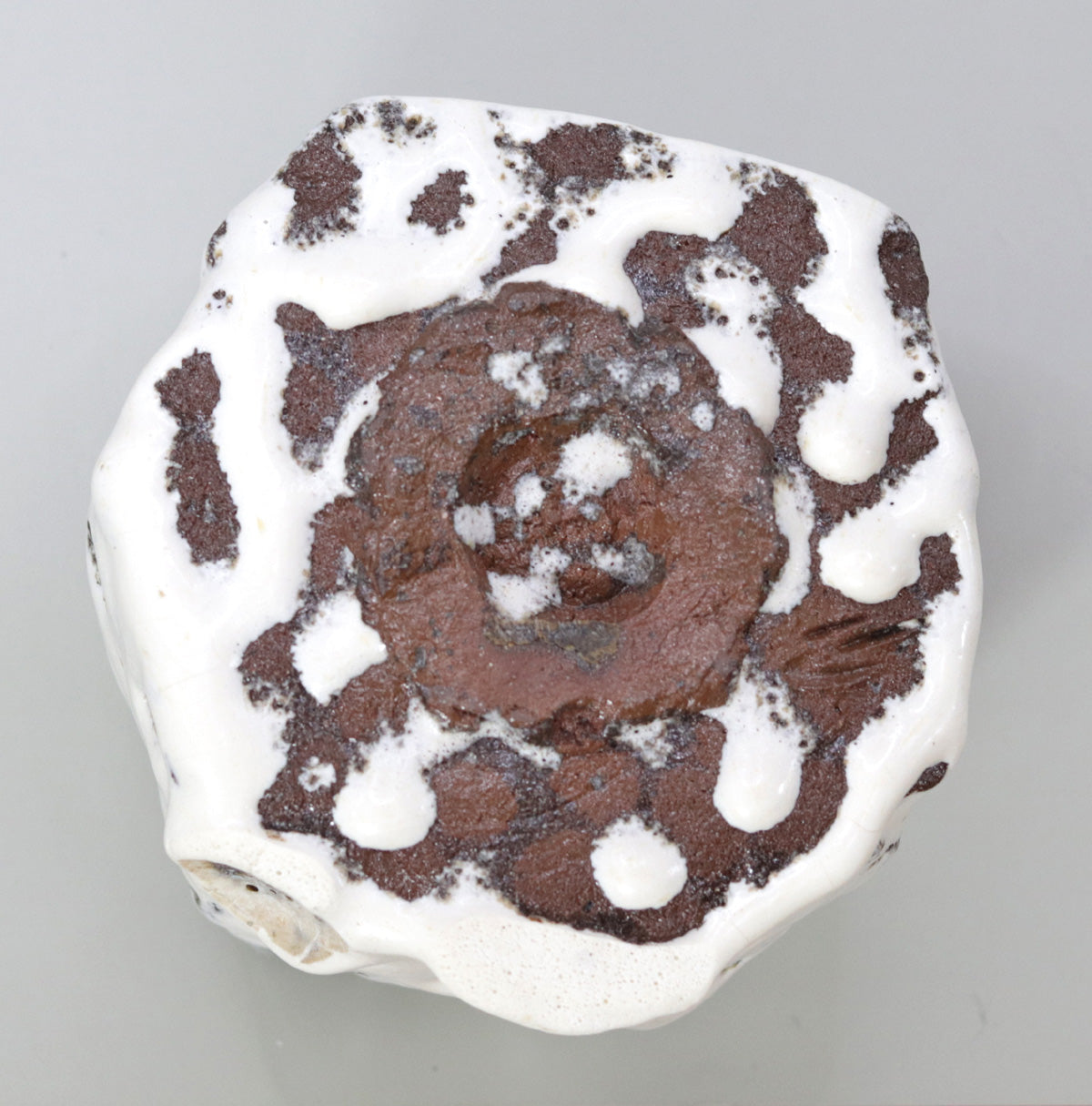Straw white glaze tea bowl Nishidansei
Straw white glaze tea bowl Nishidansei
Couldn't load pickup availability
Width: 14.4cm Depth: 12.6cm Height: 10.0cm
Straw white glaze tea bowl (warajiroyu chawan) by Nishibata Masashi - A dialogue between deep snow and lava in a secluded valley
Ink black blending into snow-white - the rich scenery of straw-white glaze
The straw-white glaze that covers this piece is as clear and white as fresh snow that falls in the mountains, but also has ink-black coloring here and there. The traces of iron contained in the straw ash crystallize black as the flames breathe, as if to mark a rhythm in the silence of the all-white piece. In particular, the gradation of light and dark that spreads from the inside to the body is reminiscent of the shifting shadows of clouds covering a snowy field, giving the piece a sense of multi-layered depth, despite being made of the same white glaze.
Irregular ridges reminiscent of a crater
The rim resembles a gently sloping four-petal flower, yet has undulations and depressions like the walls of a crater, forming a unique contour that is both sharp and soft. These undulations create a comfortable sense of tension on the lips and give the vessel a visual rhythm. The body gently bulges and converges downwards, like a sculpture frozen in the moment of melted snow flowing down into the valley below.
Organic texture created by rough soil of Tanba
The base is made of rough clay from Tanba, which contains a lot of iron and stone grains. After firing, the dark brown particles peeking out from under the glaze give the snow-white surface a subtle warmth, and the contrast between the smooth texture of the straw-white glaze and the roughness of the base enhances the rustic appeal both visually and tactilely. The pools and shrinkage of glaze seen near the bottom create a complex expression that seems to condense the natural glaze formation process, emphasizing the vitality of the entire piece.
A sculptural beauty that connects stillness and movement
The depressions and ridges on the outside are designed so that your fingers will naturally rest on them when you hold it in your palm, skillfully combining visual boldness with practical beauty. The tea that pools inside reflects the shadows of the ridges, and the reflection of light and the expression of the ink spots change from moment to moment depending on the gestures of the tea master. In thick tea, the snow-white glaze reflects softly off the dark liquid surface, while in thin tea, the ink-black faintly seeps out from between the bubbles, creating the image of a once-in-a-lifetime encounter.
Designed for practical use
The slight wavy edge makes it gentle on the mouth, and the thick body gently transfers heat to warm the palm of the hand. The inside is of moderate depth and width, allowing for easy movement of the tea whisk and making it easy to whisk the foam evenly. The base is lightly carved while still giving it a sense of stability, making it suitable for a wide range of occasions, from tea ceremonies to modern table settings.
Innovation based on tradition
Rooted in the historical context of Tamba ware, the design combines the silence of a snowy landscape with volcanic black, vividly illustrating Nishibata Tadashi's innovative spirit. The great significance of this work is that it presents a third kind of beauty, neither the traditional "dry" nor the "elegant," through the ancient material of straw white glaze. The softness that is different from white porcelain, and the dignified tension that is different from Shino ware - condensing these elements into a single bowl is also an attempt to anticipate the future of Tamba ware.
A landscape nurtured by time
With repeated use, the fine crazing will gradually take on the color of tea, adding a warmth to the contrast between the black and white ink. Also, the tea stains that remain along the ridges, like the mountainside carved by wind and snow, will reflect the owner's years on the vessel. By continuing to use it as a tool, this piece will change scenery from a quiet snowy field to budding new greenery, and it will become a deeper attachment and a story to be cherished.
Snow and lava, serenity and dynamism - opposing elements blend together in this straw white glaze tea bowl, as if you were holding a magnificent piece of nature in the palm of your hand. If you place it at a tea ceremony, it will create a tense atmosphere as if you are watching the moment the snow melts, and will surely add depth to your conversation with your guests. Please cherish it for a long time and enjoy the process of the harmony of black and white developing.
Masashi Nishibata Biography
Born on February 24, 1948. Started making pottery in 1969. 1976. Hyogo Prefectural Exhibition Encouragement Award. 1986. Selected for the Japan Traditional Crafts Exhibition for the first time. 1988. Selected for the Japan Traditional Crafts Exhibition, Japan Traditional Crafts Exhibition, Japan Crafts Association President's Award. 1989. Selected for the Japan Ceramic Art Exhibition, Handon no Kai, Nogawa Memorial Award. 1991. Selected for the Japan Traditional Crafts Exhibition, Selected for the Japan Ceramic Art Exhibition, Grand Prize at the Tea Ceremony Forms Exhibition. 1992. Selected for the Japan Traditional Crafts Exhibition, Tea Ceremony Forms Exhibition, Excellence Award, Hyogo Prefecture Emerging Artist Encouragement Award. Invited to exhibit at the NHK-sponsored Paris-Japanese Ceramics Now 100 Selections, Excellence Award at the Tea Ceremony Forms Exhibition. 1993. Selected for the Japan Traditional Crafts Exhibition, Solo Exhibition at Sogo Hiroshima Store, Kyoto Chemin. 1994. Selected for the Japan Traditional Crafts Exhibition, Solo Exhibition at Nihonbashi Mitsukoshi Main Store. 1995. Selected for the Japan Traditional Crafts Exhibition, Solo Exhibition at Sogo Hiroshima Store. 1996. Selected for the Japan Traditional Crafts Exhibition. Awarded the Excellence Award at the Tea Ceremony Art Exhibition, solo exhibition at Nihonbashi Mitsukoshi Main Store
1997 Encouragement Award at the Tea Ceremony Art Exhibition 1998 Selected for the Japanese Traditional Crafts Exhibition Solo exhibition at Mitsukoshi Nihonbashi Selected for the Japanese Traditional Crafts Exhibition 2000 Solo exhibition at Mitsukoshi Nihonbashi Solo exhibition at Mitsukoshi Fukuoka 2001 Selected for the Japanese Traditional Crafts Exhibition at Gallery Dojima 2002 Solo exhibition at Mitsukoshi Nihonbashi Solo exhibition at Gallery Dojima 2003 Solo exhibition at Santa Fe Touchingston, USA 2004 Father and son exhibition at Sogo Hiroshima store Grand Prize at the Tea Ceremony Art Exhibition 2005 Exhibited at Akashi City Museum of Culture and Hyogo Ceramics Exhibition Purchased Akadobedai, Hyogo Ceramic Art Museum Solo exhibition at Gallery Dojima Mitsukoshi Nihonbashi 2006 Grand Prize at the Tea Ceremony Art Exhibition Selected for the Japanese Traditional Crafts Exhibition at the Museum of Fine Arts, Boston and the Japan Society Gallery of New York Solo exhibition at Takashimaya Yokohama Touchingston, USA Father and son exhibition at Takashimaya Matsuyama 2007 Toshun-kai Exhibition, Sogo Yokohama Encouragement Award at the Tea Ceremony Art Exhibition Selected for the Japanese Traditional Crafts Exhibition 2008 Selected for the Japanese Traditional Crafts Exhibition Solo Exhibition, Yokohama Takashimaya Mitsukoshi Main Store, Santa Fe, Touchingston, USA Toshun-kai Exhibition, Funabashi Seibu Sogo Hiroshima Invited to exhibit at the Japanese Ceramics Exhibition 2009 Solo Exhibition, Gallery Dojima, Sendai Mitsukoshi 2010 Sogo Kobe Exhibited at the Musee Tomo Grand Prize Exhibition, Contemporary Tea Solo Exhibition, Yokohama Takashimaya Touchingston, USA, Santa Fe, 2011 Invited to exhibit at the Japanese Ceramics Exhibition Solo Exhibition, Joan B. Marvis, New York, USA Invited to exhibit at the Japanese Ceramics Exhibition 2013 Exhibited at the Musee Tomo "Contemporary Famous Bowls" Solo Exhibition, Mitsukoshi Main Store, Santa Fe, USA Miyazaki Gallery, Sogo Kobe Chiba Sogo 2014 Solo Exhibition Solo Exhibition, Mitsukoshi Main Store, Santa Fe, USA 2015 Received the Hyogo Prefecture Cultural Award in 2016. Exhibited at Higashihiroshima City Museum of Art for Ceramics that Color Our Lives - Food Wares. Exhibited at Joan B. Marvis' 40th Anniversary Exhibition in 2017.
Solo Exhibition at Nihonbashi Mitsukoshi Main Store in 2018
Share








Multi-Column
-
[I will send it to you quickly and carefully]
We carefully package each product in a way that suits it best.
Also, delivery times vary depending on the piece (vessel, etc.).
Items that already come with a box will be shipped within 1-3 days of the order date.
For items that require a box to be made after your order, it will take approximately 30 days for production to be completed and then shipped.
In either case, once we have confirmed your order, we will contact you by email to inform you of the delivery date.
-
[Requests when purchasing pottery]
Even products that look the same may differ slightly in color, shape, size, etc.
The way the glaze is used, the power of the kiln, the firing method, the season, and the humidity also affect the appearance of the pottery.
Please understand the individuality of each piece of pottery and enjoy the unique warmth of handmade.

